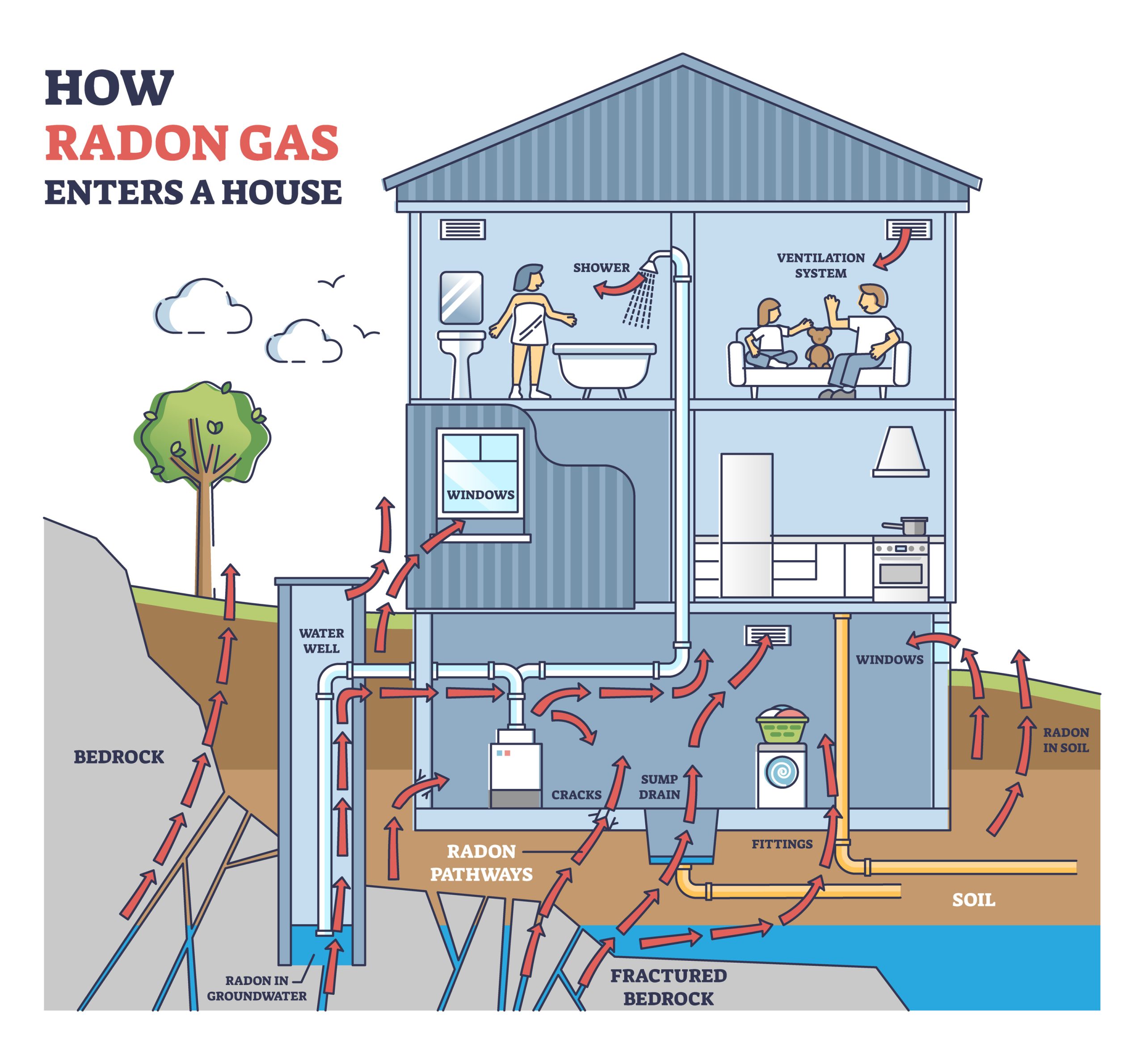How Radon Enters Homes
Radon is a naturally occurring radioactive gas that comes from the decay of uranium in the soil and rocks beneath the Earth's surface. Here's how it can enter homes:- Soil: The most common source. Radon seeps through cracks and gaps in the foundation or walls in contact with the soil.
- Water Supply: Particularly in well water, radon can be released into the air when water is used for showering or other household purposes.
- Construction Materials: Some building materials, though less commonly, can emit radon, but this is usually a minor source compared to soil and water.
- Air Pressure: Lower air pressure inside the home than the soil around the home's foundation can draw radon indoors.
- Natural Ventilation: Radon can enter through windows and doors if the outdoor air contains radon (less common).

When to Worry: Understanding Radon Levels and When to Act
The U.S. Environmental Protection Agency (EPA) recommends reducing radon levels in homes with a radon level at or above 4 picocuries per liter (pCi/L) of air. It's worth noting that the EPA does not describe any level of radon exposure as "safe," but the 4 pCi/L level is where the agency recommends taking corrective action. Given the gravity of the risks, the Colorado State Senate has taken decisive action to protect its residents by enacting SENATE BILL 23-206. This legislation significantly expands the scope of radon disclosure laws, setting rigorous new protections and guidelines that impact tenants and landlords.When to Test
Radon experts recommend different testing based on the history of radon in a particular property. Here's a breakdown of recommendations for the State of Colorado:- Every 5 years: The home has been tested, results were below 4 pCi/L, and no mitigation system has been installed
- Every 2 years: If the property currently has a system
- As Soon as Possible: The home has never been tested

